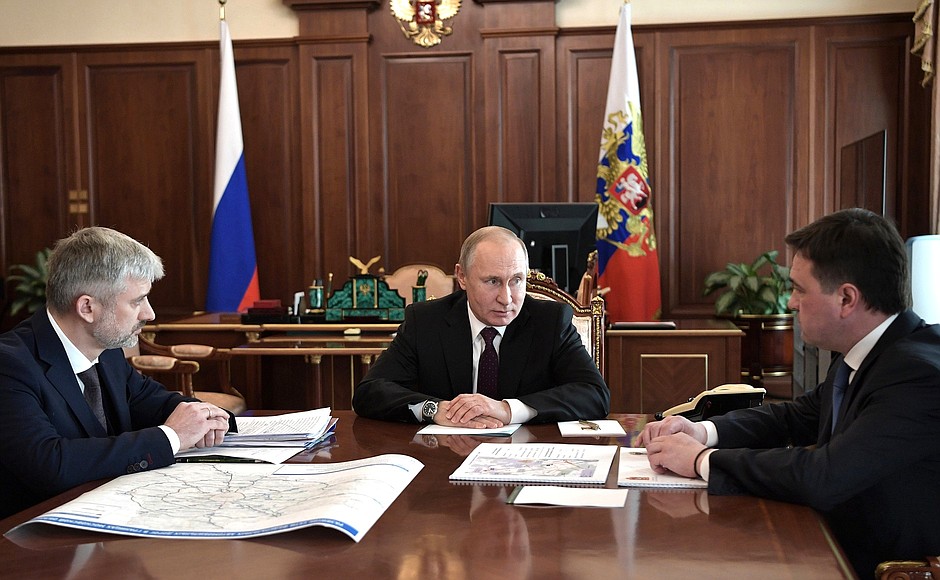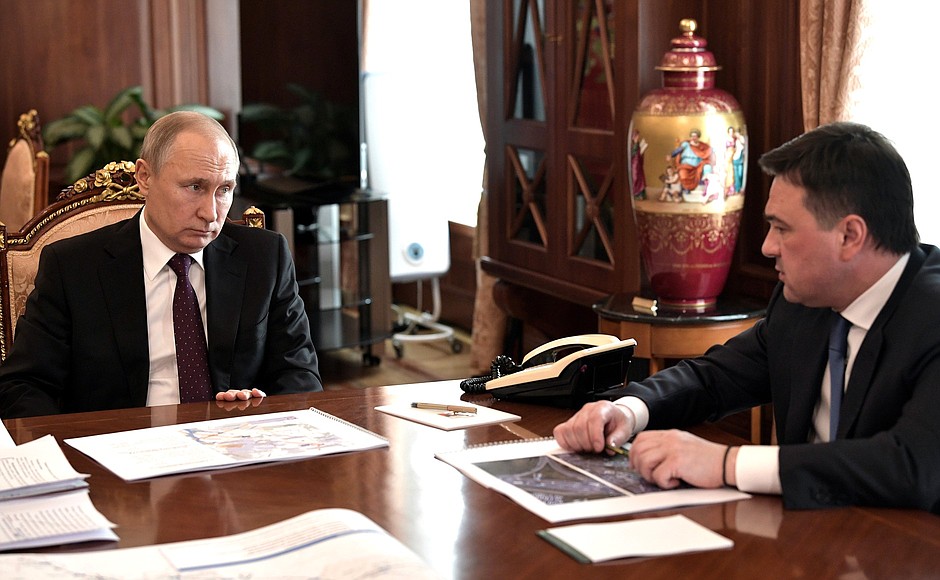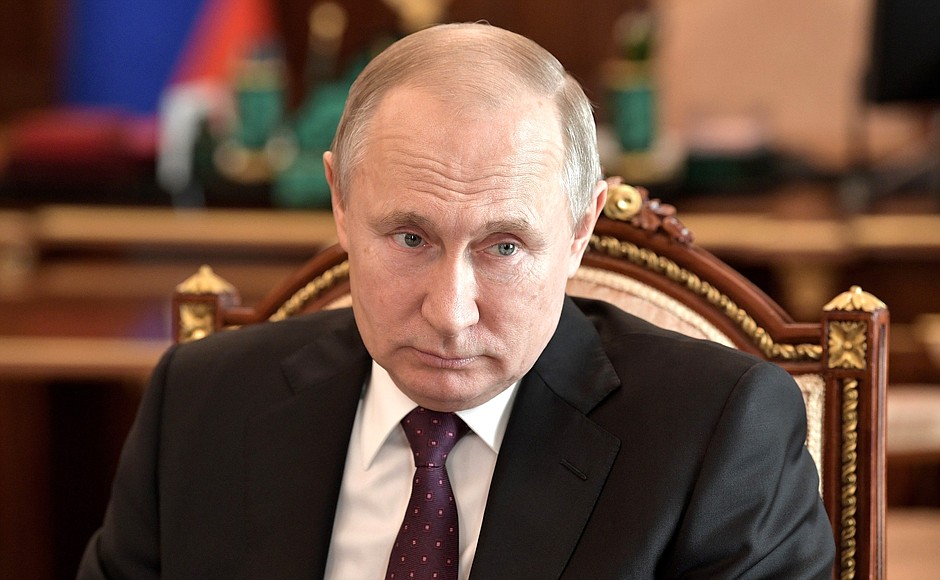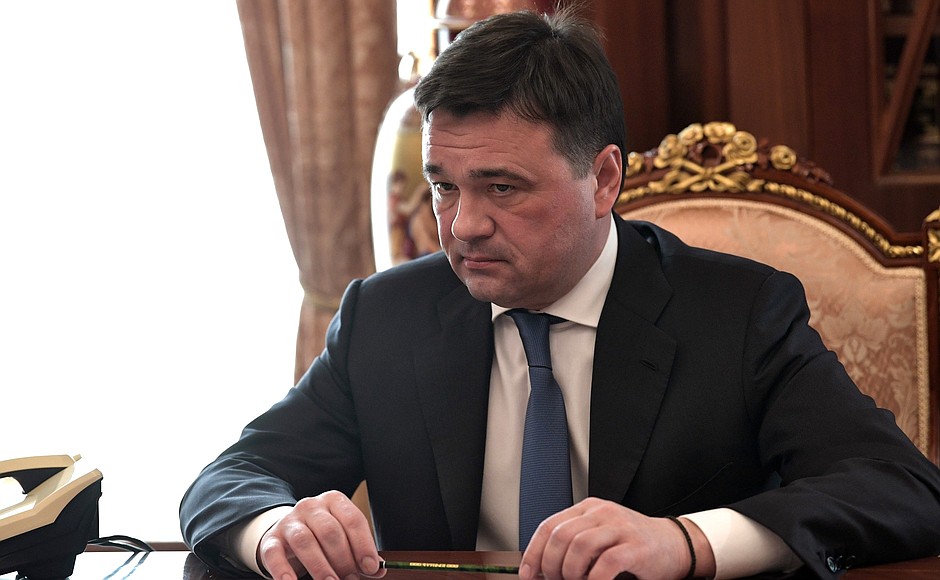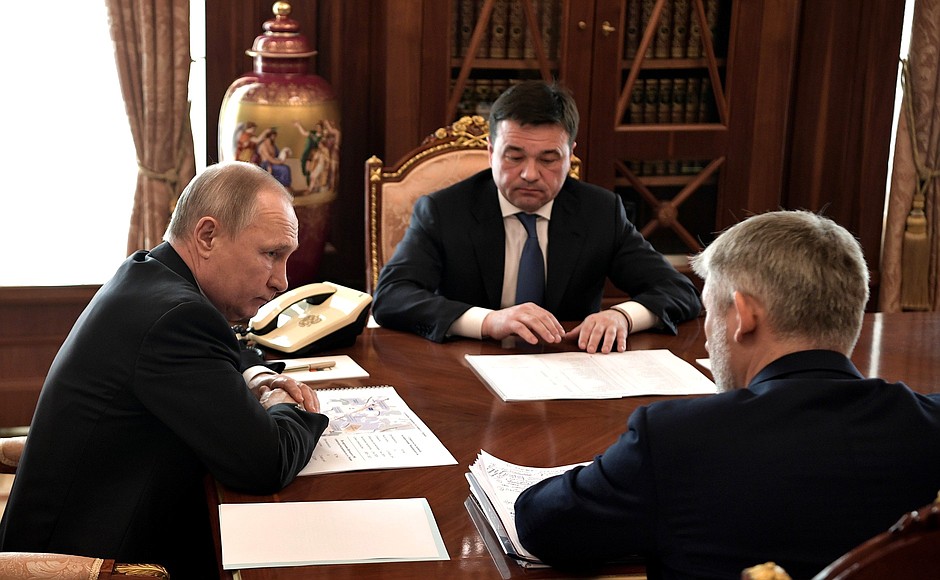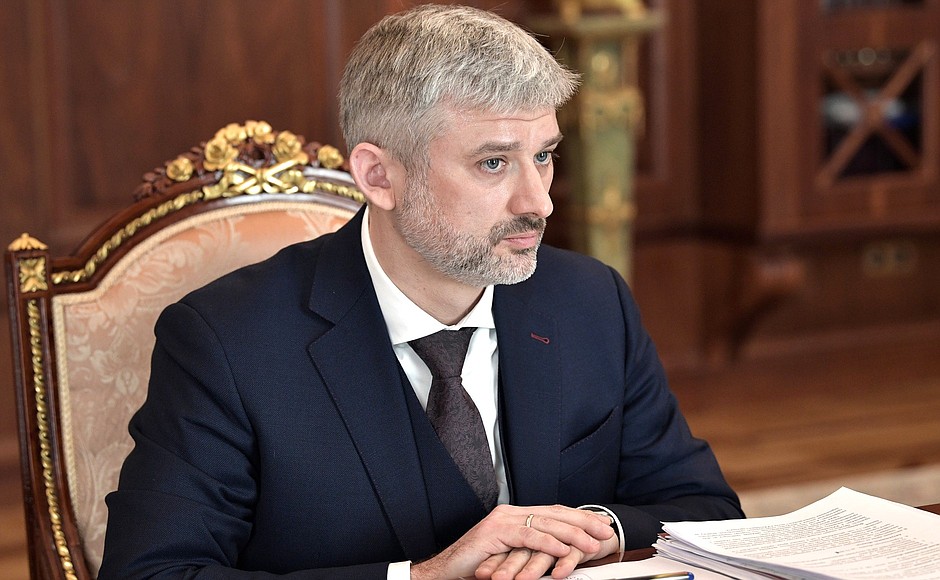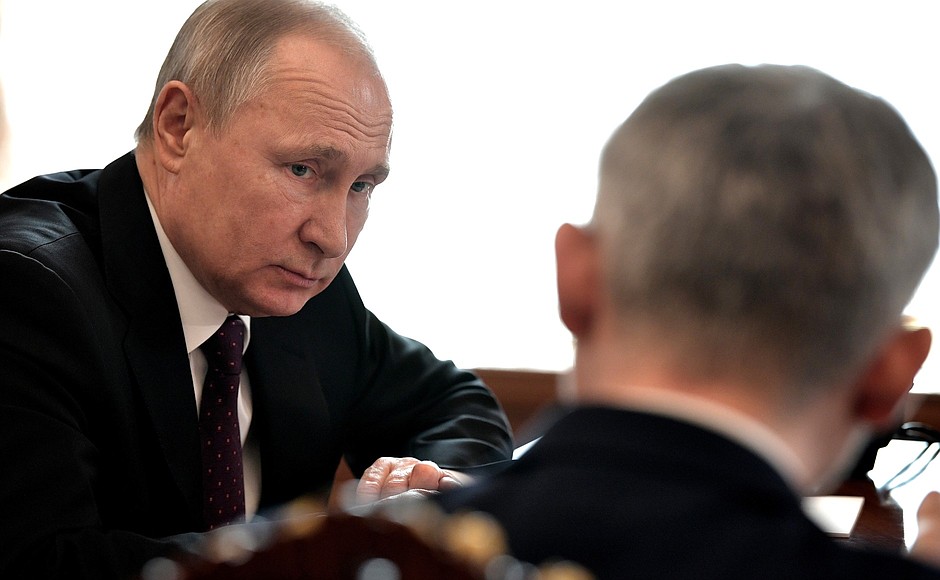The discussion focused on efforts to fulfil an April 12 promise to Energomash workers, made during President Putin’s visit to this leading Russian company that develops liquid-propellant rocket engines for launch vehicles of various classes. The problem is that it is necessary to connect two parts of the town of Khimki where the company is located by building a junction with a flyover.
There are plans to complete the design work before the year is out, Minister of Transport Yevgeny Ditrikh noted. And construction and assembly operations are to get underway in early 2020. The project is to be completed in the summer or autumn of 2021.
The discussion also dealt with the development of Moscow Region’s entire road network which is over 40,000 kilometres long.
Level crossings are one of the main problems as most of the barriers are closed for 10–12 hours, because it is so busy with commuter trains especially during rush hour. Over 140 billion rubles were allocated under a presidential decision, and 37 crossings were already built. Another 62 facilities are currently under construction. This programme continues because the ambitious Moscow Central Diameters project with six-minute intervals between trains is currently being implemented. Therefore, Moscow Region is working on projects to build new crossings together with the Ministry of Transport and Moscow.
The Minister of Transport noted, in turn, that Moscow and Moscow Region had a total population of about 20 million and nearly 6.5 million vehicles. This accounts for 15 percent of all vehicles nationwide, and this heavy traffic continues to increase each year. The intensity of road traffic has soared by 40–70 percent since 2010. Therefore, it is particularly important that radial and federal routes meet preset standards. They allow people in Moscow to leave the city for Moscow Region, also enabling people in the Moscow Region to commute to Moscow for work and back.
A lot of people come in from the nearby regions to Moscow Region and Moscow. According to the Minister of Transport, official road-quality standards have been raised from 58 to 92 percent. Today, 92 percent of the federal roads in Moscow Region meet official standards. Over the past nine years, over 320 kilometres of roads have been built with four or more lanes. Today, there are plans to build about 800 kilometres of roads. Out of this number, 700 kilometres of roads are to be completed in Moscow Region by 2024.
Andrei Vorobyov also touched upon road accident fatalities in the context of the target set in the 2018 presidential Executive Order to drastically reduce them. In his words, joint efforts make it possible to reduce the number of road accident fatalities on federal, regional and municipal roads by about 20–25 percent annually. Specific measures include the installation of additional CCTV and speed cameras, and those caught speeding are also severely punished. Designated safety barriers also produce a certain effect, and this work continues, as well.
Yevgeny Ditrikh added that Moscow Region boasted what is probably the most advanced national practice for quickly assessing the causes of road accidents on all roads without exception. Various measures are implemented over a period of seven to ten days, and technical systems are installed, preventing any possible future road accidents in specific areas.
According to the Minister of Transport, reduced road traffic fatalities in Moscow Region are a tremendous result that must be spread all over Russia.
